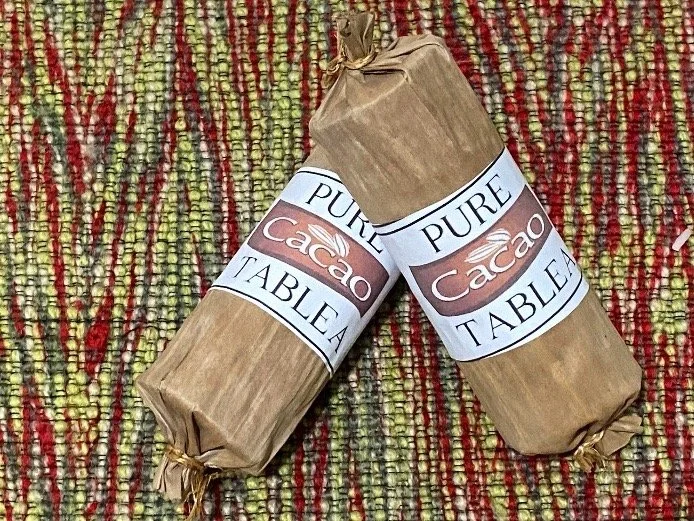Discover the Top 25 Cebuano Delicacies: A Taste of Authentic Cebu
Are you curious about the top Cebuano delicacies that are offered in the streets and fancy restaurants in Cebu? Known as the Queen City of the South, Cebu is more than just stunning beaches and historical landmarks. It’s a treasure trove of culinary delights that can satisfy both the sweet-toothed and the savory-seekers.
These are 25 of the top Cebuano delicacies you can try when you visit the destination:
1. Lechon
Origin: Spanish Influence
Best Places: Carcar, CnT Lechon
Dubbed as the “best pig ever” by celebrity chef Anthony Bourdain, Lechon is a spit-roasted pig that's marinated and stuffed with a mixture of spices. The crispy skin and juicy meat make this a centerpiece in any Filipino celebration.
2. Dried Mangoes
Origin: Native to Cebu
Best Places: Profood Factory, Local Supermarkets
Chewy, sweet, and a little tangy, Cebu’s dried mangoes are a must-try. They’re made from locally sourced mangoes and are a popular pasalubong (souvenir) item.
3. Puso (Hanging Rice)
Origin: Indigenous Practice
Best Places: Larsian Sa Fuente, Street Vendors
Puso, also known as "hanging rice," is rice wrapped in coconut leaves. It's a staple that accompanies grilled dishes and is usually found hanging in clusters at roadside stalls.
4. Chicharon
Origin: Spanish Influence
Best Places: Carcar Market, Liloan’s Rosquillos
Deep-fried to perfection, Chicharon is crispy pork skin that serves as a delectable snack or appetizer. Carcar is known as the Chicharon Capital of Cebu.
5. Budbud Kabog
Origin: Native to Cebu
Best Places: Argao, Dalaguete
Budbud Kabog is a sticky rice cake made from millet instead of rice. It is wrapped in banana leaves and typically eaten with hot chocolate.
6. Biko
Origin: Filipino Heritage
Best Places: Local Markets, Street Vendors
Biko is a sticky rice cake sweetened with brown sugar and coconut milk. It’s a traditional Filipino dessert especially popular during fiestas.
7. Otap
Origin: Spanish Influence
Best Places: Shamrock Bakery, La Fortuna Bakery
Otap is an oval-shaped puff pastry that’s crisp, flaky, and sprinkled with sugar. It’s a Spanish-influenced treat that has become uniquely Cebuano.
8. Ngohiong
Origin: Chinese Influence
Best Places: Carlos Ngohiong, Doming’s Ngohiong
Ngohiong is a deep-fried spring roll filled with a mixture of jicama, bamboo shoots, and meat. It’s a Cebuano take on the Chinese spring roll.
9. Rosquillos
Origin: Spanish Influence
Best Places: Liloan’s Rosquillos, Titay’s
Ring-shaped and sugar-coated, Rosquillos are cookies that were originally created in Liloan, Cebu. They are often enjoyed with coffee or milk.
10. Sinuglaw
Origin: Native to Cebu
Best Places: STK Ta Bai, Isla Sugbu Seafood City
Sinuglaw is a dish that combines grilled pork and raw fish cured in vinegar and citrus. It’s a symphony of flavors that encapsulates the essence of Cebuano cooking.
11. Balbacua
Origin: Native to Cebu
Best Places: Cebu’s Original Lechon Belly, Street Vendors
Balbacua is a slow-cooked oxtail stew made with a variety of spices and peanut sauce. It's a comfort food best enjoyed with puso.
12. Masareal
Origin: Spanish Influence
Best Places: Mandaue City, 7D Food International
Masareal is a sweet bar made of ground peanuts and sugar. It's a delightful treat that dates back to the Spanish era.
13. Sutukil
Origin: Indigenous Practice
Best Places: SuTuKil, Local Seafood Markets
Sutokil (or roughly, Kinilaw) is a dish of raw fish marinated in vinegar, ginger, and chilies. It's a Filipino version of ceviche and is enjoyed as an appetizer.
14. Tabliya
Origin: Native to Cebu
Best Places: Argao, Ralfe Gourmet
Tabliya is Cebu’s version of chocolate tablets made from locally sourced cacao. It’s used to make traditional Filipino hot chocolate.
15. Ampao
Origin: Native to Cebu
Best Places: Carcar City, Street Vendors
Ampao is a sweetened rice crispie that's native to Carcar City. It’s coated in sugar and often colored to make it more appealing.
16. Siakoy
Origin: Chinese Influence
Best Places: Street Vendors, Public Markets
A twisted doughnut that is deep-fried and coated with sugar.
17. Bam-I
Origin: Chinese Influence
Best Places: Kuya J’s, Moon Cafe
A noodle dish combining both vermicelli and egg noodles, flavored with soy and vegetables.
18. Ginabot
Origin: Native to Cebu
Best Places: Larsian Sa Fuente, Street Vendors
Deep-fried pork intestines, a local favorite often paired with beer.
19. Taho
Origin: Chinese Influence
Best Places: Street Vendors, Malls
A warm treat made from soft tofu, arnibal syrup, and tapioca pearls.
20. Torta
Origin: Spanish Influence
Best Places: Argao, Local Bakeries
A sponge cake made with tuba (coconut wine) instead of yeast.
21. Pochero
Origin: Spanish Influence
Best Places: Abuhan, Pocherohan sa Mabolo
A stew made with beef shanks, banana, and cabbage.
22. Linarang
Origin: Native to Cebu
Best Places: Pasil Market, Local Carinderias
A spicy fish stew made with various herbs, vegetables, and tamarind.
23. Lengua de Gato
Origin: Spanish Influence
Best Places: Local Bakeries, Souvenir Shops
Thin, buttery cookies, often enjoyed with coffee or tea.
24. Adobo sa Asin
Origin: Filipino Heritage
Best Places: Home-cooked, Local Carinderias
Chicken or pork adobo cooked with salt instead of soy sauce.
25. Hojaldres
Origin: Spanish Influence
Best Places: Oslob, Local Bakeries
A flaky pastry similar to Otap but larger and round-shaped.
So there you have it—the top 25 Cebuano delicacies that offer a captivating taste of Cebu’s culinary diversity. Make sure to try each one when you visit Cebu to get the full experience of its rich culture and heritage.
